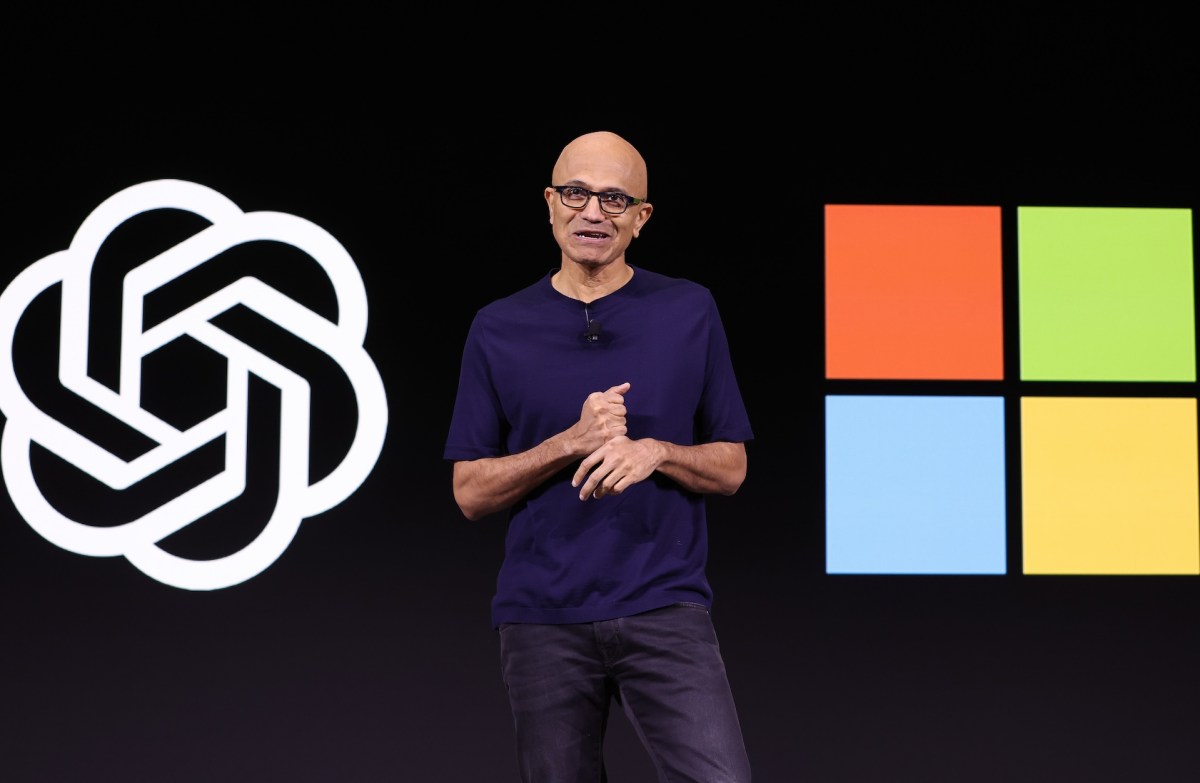Good morning, aspiring leaders of the next-gen! ☀️
🚀 Here’s what’s going on today in the AI space…
Hebbia, an AI startup, successfully raised $130 million in Series B funding at a valuation of about $700 million. This round was led by Andreessen Horowitz and saw contributions from Index Ventures, Google Ventures, and Peter Thiel. The funding rate is notable, reaching 50x annual recurring revenue, indicating a strong performance with $13 million in profitable revenue. Hebbia specializes in generative AI for searching and analyzing large documents, primarily servicing financial institutions but is expanding to law firms and pharmaceutical companies.
Claude AI and ChatGPT are two AI chatbots with distinct offerings. Claude, by Anthropic, is designed with a strong ethical framework and does not have internet access, relying on data only up to August 2023. It offers a free version with access to its latest model but has usage restrictions. ChatGPT, developed by OpenAI, provides broader capabilities including internet access and advanced multimodal interactions. Both platforms offer premium subscriptions, with Claude Pro and ChatGPT Plus enhancing features and usage limits for a monthly fee.

Microsoft has vacated its observer seat on OpenAI's board, indicating satisfaction with OpenAI's direction. Following this, OpenAI announced that it will not appoint any more observers. The decision comes amidst ongoing scrutiny from EU regulators regarding the potential for such investments to enable big tech firms to unduly influence other companies. This strategic shift aligns with Microsoft's intent to avoid further regulatory scrutiny. OpenAI remains committed to enhancing transparency and engagement with strategic partners and investors.
📔 #1 Insights Today on AI. Click the Links to Read
Russell has emphasized the importance of creating AI systems that are aligned with human values and objectives. He has suggested that instead of programming AI with fixed objectives, we should create AI systems that are uncertain about human preferences and motivated to learn what humans truly want.
This concept is often referred to as the "value learning" approach to AI alignment. It's a key idea in Russell's work on making AI systems that are "human-compatible."
Human Compatible: Artificial Intelligence and the Problem of Control" is a book by Stuart Russell, a computer science professor at UC Berkeley. The book discusses the potential risks and challenges associated with advanced AI systems and proposes approaches to ensure that AI remains beneficial to humanity.
Some key themes and ideas from the book include:
The control problem: Russell argues that as AI systems become more powerful, ensuring they remain under human control and aligned with human values becomes increasingly important.
Misaligned objectives: The book discusses the risks of AI systems optimizing for the wrong objectives, potentially leading to unintended and harmful consequences.
Value alignment: Russell proposes that AI systems should be designed to be uncertain about human preferences and values, motivating them to learn and align with human intentions.
Inverse reinforcement learning: This concept is explored as a potential approach to creating AI systems that can infer human preferences from observed behavior.
Long-term implications: The book considers the potential long-term impacts of advanced AI on society, the economy, and human existence.
Ethical considerations: Russell discusses various ethical implications of AI development and deployment.
⬆️ ️ Trends: How Businesses Implement AI
In today's business world, data-driven insights and smart decision-making are crucial for success. Microsoft is revolutionizing operations with AI across its tools and applications.

Power BI transforms raw data into interactive insights, offering real-time analytics and customizable dashboards, enabling predictive analysis to anticipate trends and mitigate risks.
Dynamics 365 AI enhances customer relationship management by integrating AI-driven insights, transforming customer interactions through intelligent sales forecasting and personalized service.
AI in Office 365 boosts productivity with intelligent content suggestions in Word, smart email categorization in Outlook, and AI-powered data analysis in Excel. Azure provides AI services for custom solutions, including machine learning and natural language processing.
Microsoft's AI solutions offer predictive analytics, optimizing operations and aligning strategic decisions with long-term goals. AI enhances supply chain management by optimizing inventory levels, predicting demand fluctuations, and streamlining logistics.
Microsoft continues to invest in AI research, promising innovative solutions like intelligent virtual assistants and AI-driven creativity, empowering businesses in a data-centric world.
⭐Which most closely describes your current job title?
🛸 Let’s Teleport in The Future
Meta introduces Meta 3D Gen (3DGen), a fast pipeline for creating high-fidelity 3D assets from text prompts in under a minute. Supporting physically-based rendering (PBR), 3DGen ensures realistic relighting and allows generative retexturing of both generated and artist-created 3D models.

Stage 1: 3D asset generation - Given a text prompt provided by the user, Stage I creates an initial 3D asset using Meta's 3D AssetGen model (AssetGen). This step produces a 3D mesh with texture and PBR material maps. The inference time is approximately 30 seconds.
Stage 2:
Use Case 1: Generative 3D texture refinement - Given a 3D asset generated in Stage 1 and the initial text prompt, Stage 2 produces higher-quality texture and PBR maps for this asset. It utilizes Meta's text-to-texture generator, Meta 3D TextureGen. The inference time is approximately 20 seconds.
Use Case 2: Generative 3D (re)texturing - Given an untextured 3D mesh and a prompt describing its desired appearance. Stage 2 can also generate a texture for this 3D asset from scratch (the mesh can be previously generated or artist-created). The inference time is approximately 20 seconds.
⚡ Prompting
I canceled my ChatGPT subscription today. OpenAI is not justifying the $23 price tag; the hype and wait are simply too much. - The GPT-4o voice feature likely won't be available to all users before November. - There is no official announcement regarding GPT-5 and GPT4o simply sucks. - Sora will probably be available in 2025 or 2026 for general users as they are only doing deals with Hollywood. - Voice engine is only available for some limited partners. - The new image feature (Improved DALL-E) mentioned with GPT-4o in the paper, no one knows anything about that.
2. Your Color Matching Consultant
Claude is a super accurate eyedropper. If you want to know the exact color of anything, you can simply ask our AI tool, GPT-4o or Claude
It will tell you the exact Pantone or HEX color so that you can have it as a reference.
In the photo below, I asked for the Pantone color of Bee’s nails, and the answer was Pantone 7485 C, which is remarkably accurate and shows how well AI can understand color.

⭐What specific AI use cases or applications are you most interested in?
⚡ Hands-on: Supercharge With AI Tools
Work smarter, not harder!
Introduction to EssayGPT: EssayGPT is a comprehensive AI-powered essay writing tool designed to assist students and professionals in crafting high-quality essays with ease. From generating content to editing and citing sources, EssayGPT offers a range of features to streamline the essay writing process.
Steps to Use EssayGPT:
Sign Up:
Visit the EssayGPT website and sign up for a free account. No credit card is required.
Start with Your Text:
Begin by inputting your text, ideas, PowerPoint presentations (PPT), blog posts, or tweets into the EssayGPT editor.
Generate Your Essay:
Use the AI Essay Generator to quickly create outlines, drafts, or complete essays on your chosen topic.
Personalize Your Content:
Choose and personalize AI voices for audio versions of your essays. Select media or let the AI generate relevant visuals.
Edit and Improve:
Utilize tools like the essay checker, expander, shortener, rewriter, and thesis statement generator to refine and enhance your content.
Cite and Check Plagiarism:
Easily add citations and check for plagiarism to ensure academic integrity.
Export Your Essay:
Export your finished essays with a single click, choosing from various file formats for easy sharing or submission.
EssayGPT simplifies the essay writing process, making it accessible and efficient for students and professionals at all levels. Explore the wide range of tools and features to supercharge your writing today
Visit EssayGPT: → https://essaygpt.hix.ai/
I hope you find these resources helpful. Let me know if you have any questions, if there's anything else I can do to assist you, or what you would like to learn more about in AI.
Have an amazing day!
No more playing catch-up. It's time to GET AHEAD!!! 🚀🚀🚀
🙌🏼
Elena
⚡︎🔋 The Supercharged - loved by thousands of readers ❤️🙋♀️
Did The Supercharged bring you the ultimate satisfaction this week?
The Supercharged is the #1 AI Newsletter for Entrepreneurs with 15,000 + readers working at the world’s leading startups and enterprises. The Supercharged is free for the readers. Main ads are typically sold out 2 weeks in advance. You can book future ad spots here.






